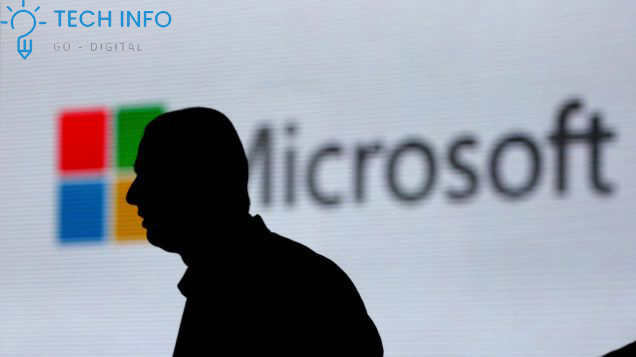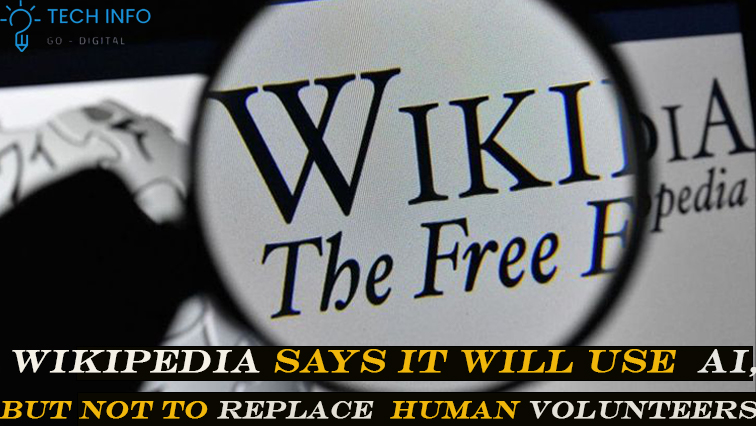Google will pay Texas $1.4 billion to settle privacy lawsuits

Google’s $1.4 Billion Privacy Settlement with Texas: The End of Big Tech’s Data Wild West May 11, 2025 – In a landmark decision reshaping digital privacy norms, Google finalized a $1.4 billion settlement with Texas today, resolving allegations of systemic user tracking and biometric data exploitation. This record-breaking agreement – the largest state-level tech settlement in U.S. history – signals a dramatic escalation in regulators’ efforts to rein in Silicon Valley’s data practices. Let’s examine what this means for consumers, corporations, and the future of online privacy. I. The Core Allegations: Why Texas Drew First Blood The lawsuit centered on three primary claims of privacy violations spanning 2018-2024: Texas leveraged its 2009 Biometric Privacy Act – one of America’s strictest – to argue Google turned the state into a “24/7 surveillance colony.” With 93% of Texans using Google services daily, the state claimed damages of $8,200 per resident under statutory penalty calculations. II. Settlement Breakdown: More Than Just Money While the $1.4 billion headline figure dominates coverage, the 187-page consent decree introduces groundbreaking operational constraints: A. Financial Penalties B. Technical Reforms C. Oversight Mechanisms This goes far beyond Google’s 2022 $391.5 million multi-state location tracking settlement, establishing Texas as America’s de facto privacy enforcement leader. III. The Ripple Effect: Industry-Wide Tremors Within hours of the announcement, seismic shifts rocked the tech landscape: A. Market Reactions B. Regulatory Dominoes C. User Behavior Shifts IV. Expert Analysis: Three Paradigm Shifts Legal and tech analysts identify these transformational impacts: V. What Texans Gain – And Lose Immediate Benefits (2025-2026): Unintended Consequences: VI. Global Implications: A New Privacy World Order This settlement creates three irreversible trends: VII. The Road Ahead: Unresolved Questions The Privacy Reformation Begins Google’s Texas settlement marks more than a legal resolution – it’s the opening salvo in a global battle over digital self-determination. As other jurisdictions replicate Texas’ template, users finally gain leverage in the data economy. Yet the path forward remains fraught with technical complexities and unintended consequences. One truth emerges clearly: the era of surveillance capitalism’s free ride is over, and the bill has come due.
Microsoft employees are banned from using DeepSeek app, president says

Introduction In a surprising move, Microsoft President Brad Smith recently announced that Microsoft employees are banned from using the AI-powered DeepSeek app, a rising competitor in the artificial intelligence space. This decision has sparked debates about corporate restrictions, AI competition, and the future of workplace technology policies. But why would Microsoft prohibit its employees from using an external AI tool? What does DeepSeek offer that might concern Microsoft? And what does this mean for the broader AI industry? In this blog post, we’ll explore: What Is DeepSeek? DeepSeek is an advanced AI-powered search and productivity tool developed by a Chinese AI research company. It offers capabilities similar to OpenAI’s ChatGPT and Microsoft’s own Copilot, including: DeepSeek has gained traction due to its multilingual support, cost-effectiveness, and strong performance in technical tasks, making it a viable alternative to established AI models like GPT-4 and Gemini. Why Is Microsoft Concerned? Microsoft has heavily invested in AI through its partnership with OpenAI, integrating AI into products like Copilot, Azure AI, and Bing Chat. The ban on DeepSeek suggests that Microsoft sees it as a competitive threat, possibly due to: Microsoft’s Official Reasoning for the Ban Brad Smith cited security and compliance concerns as the primary reason for prohibiting DeepSeek. Microsoft, like many tech giants, has strict policies on data handling and third-party software usage. Key Concerns Behind the Ban: This move aligns with similar restrictions at companies like Apple, Google, and Amazon, which also limit employee use of external AI tools. Broader Implications for AI Competition Microsoft’s ban on DeepSeek highlights the increasingly competitive AI landscape. Here’s what this means: 1. AI Wars Are Heating Up 2. Employee Access to AI Tools Will Be Restricted 3. The Debate Over Open vs. Closed AI Ecosystems This tension will shape how AI evolves in enterprise settings. Ethical and Security Concerns with Third-Party AI Beyond competition, Microsoft’s decision reflects broader ethical and security dilemmas in AI adoption: 1. Data Privacy Risks 2. Compliance and Legal Issues 3. AI-Generated Misinformation and Bias Will This Ban Hurt or Help Microsoft? Arguments in Favor of the Ban: ✅ Enhanced Security – Prevents potential data breaches via unapproved AI.✅ Workflow Consistency – Ensures employees use Microsoft’s integrated AI tools.✅ Competitive Edge – Limits rival AI adoption within the company. Arguments Against the Ban: ❌ Stifles Innovation – Employees may miss out on useful AI advancements.❌ Overly Restrictive – Could push talent toward more flexible companies.❌ Hypocrisy Concerns – Microsoft promotes AI openness but restricts alternatives. The Future of AI in the Workplace Microsoft’s DeepSeek ban is just the beginning. Here’s what to expect: 1. More AI Restrictions Across Industries 2. Rise of Enterprise-Grade AI Solutions 3. Employee Training on AI Best Practices A Sign of AI’s Growing Pains Microsoft’s ban on DeepSeek underscores the challenges of AI adoption in corporate environments. While security and competition are valid concerns, overly restrictive policies could hinder innovation. The key takeaway? AI is powerful but comes with risks—companies must strike a balance between security, productivity, and openness.
NSO Group must pay more than $167 million in damages to WhatsApp for spyware campaign

NSO Group Ordered to Pay $167M to WhatsApp: A Watershed Moment in the Battle Against Commercial Spyware The $167 million judgment against NSO Group in its legal battle with WhatsApp marks more than a financial penalty—it’s a seismic shift in how democracies confront the shadowy world of mercenary surveillance. On May 7, 2025, a U.S. federal court finalized the ruling, capping a six-year saga that exposed how private companies weaponize zero-day exploits to infiltrate the devices of journalists, activists, and politicians. This case isn’t just about reparations; it’s a referendum on the ethics of privatized cyber warfare and a warning shot to the $12B global surveillance-for-hire industry. The Anatomy of a Digital Betrayal: How NSO’s Pegasus Exploited WhatsApp In April 2019, NSO Group allegedly deployed its infamous Pegasus spyware through a vulnerability in WhatsApp’s video call feature. Here’s how the attack unfolded: WhatsApp’s parent company Meta responded by patching the flaw within 72 hours—but the breach exposed systemic risks in end-to-end encryption architectures. NSO’s Defense Playbook: Sovereign Immunity and the “Dual-Use” Dodge NSO Group’s legal strategy relied on two controversial arguments: The court rejected both arguments, with Judge Gonzalez-Rogers stating: “A private entity cannot outsource constitutional violations to evade accountability. The cloak of national security does not absolve contractors of their role in enabling digital tyranny.” The $167M Breakdown: How Damages Were Calculated The penalty reflects a novel application of the Computer Fraud and Abuse Act (CFAA) and Wiretap Act: Category Amount Rationale Punitive Damages $102M Intentional bypass of encryption; reckless disregard for human rights Compensatory Damages $48M WhatsApp’s costs for forensic audits, security overhauls, and PR crisis management Statutory Penalties $17M $10k per violation under Wiretap Act (1,400+ devices) Notably, the court allowed WhatsApp to pursue discovery into NSO’s client list—a move that could unmask authoritarian regimes’ reliance on Western-backed spyware firms. The Ripple Effects: Three Industries Forever Changed 1. Surveillance Tech’s “Wild West” Era Ends 2. Big Tech’s New Accountability Standard WhatsApp’s victory pressures other platforms to: 3. The Rise of Anti-Spyware Coalitions A consortium of encrypted apps (Signal, Threema, Wickr) launched the Secure Communications Alliance in Q1 2025, featuring: Ethical Quagmire: Can Spyware Ever Be “Responsible”? NSO’s case reignited debates about regulating dual-use technologies: What’s Next for NSO—And Its Victims? Despite the ruling, challenges remain: The Judgment as a Blueprint for Digital Justice The WhatsApp-NSO verdict establishes critical precedents:
Substack launches audio-only livestream feature

Substack Launches Audio-Only Livestream Feature: Reinventing Creator-Audience Dynamics in the Post-Podcast Era The digital content landscape is undergoing its most radical transformation since the rise of YouTube and TikTok, and Substack—a platform synonymous with email newsletters—is making a bold play to lead the next wave. On May 6, 2025, Substack announced the global rollout of its audio-only livestream feature, a move that merges the intimacy of podcasting with the urgency of real-time engagement. But this isn’t just another tech update; it’s a strategic gambit to redefine how creators monetize, audiences consume, and communities interact in an era oversaturated with content. Let’s unpack why this launch matters and what it signals for the future of digital media. From Newsletters to Neo-Radio: Substack’s Evolution Substack’s journey began as a sanctuary for writers fleeing algorithmic feeds and ad-driven models. By 2023, it had already expanded into video essays and pre-recorded podcasts. The introduction of live audio streaming marks its most audacious pivot yet. Unlike Spotify’s Anchor or Patreon’s static audio posts, Substack’s livestream tool is designed to work in tandem with its existing infrastructure: This isn’t just a feature—it’s an ecosystem play. By layering live audio atop its subscription engine, Substack positions itself as a one-stop shop for creators who want to build and monetize deep, multi-format relationships with audiences. The Audio Renaissance: Why Now? Audio’s resurgence isn’t accidental. In a post-TikTok world, audiences are fatigued by visual overload. Pre-2025 data reveals: Substack’s move capitalizes on these trends while addressing creator pain points. Traditional podcast platforms like Apple Podcasts or Spotify take hefty revenue cuts (up to 30%) and offer limited direct monetization tools. Substack flips the script: creators keep 90% of subscription revenue, and now, live audio becomes a premium perk to justify $5–$20/month tiers. Case Study: Early Adopters Rewriting the Rules Substack’s beta testers—a mix of journalists, niche educators, and indie musicians—have already showcased the feature’s disruptive potential: 1. The Investigative Journalist Sarah Lin, an award-winning reporter covering AI ethics, uses live audio streams to: Result: A 40% spike in conversions for her $15/month “Insider Access” tier. 2. The Indie Musician Jake Rivera, a lo-fi hip-hop artist, streams live beat-making sessions where subscribers request samples or rhythms. Post-stream, he packages the finished track as a downloadable NFT—a perk for top-tier members. 3. The Micro-Community Builder Dr. Priya Rao, a historian focusing on Southeast Asian folklore, hosts live storytelling nights with rotating guest speakers from her subscriber base. These streams double as oral history archives, later transcribed into Substack post The Strategic Calculus: Substack vs. The Titans Substack isn’t just competing with newsletter platforms like Ghost or Beehiiv—it’s now tangling with audio giants: Platform Monetization Model Creator Cut Live Audio Tools Substack Subscription-first 90% Paid tiers, Q&A, transcripts Spotify Live Ad-supported 50–70% Basic interaction Twitter Spaces Free $0 Super Follows (limited) Patreon Hybrid (subscription) 88–95% Pre-recorded audio only Substack’s edge lies in its bundled value proposition: creators can weave live audio into a broader content strategy without fragmenting their audience across platforms. Challenges Ahead: The Roadblocks Substack Must Navigate The Future of Substack: Predictions for 2026–2030 A New Paradigm for the Attention Economy Substack’s audio livestream launch isn’t merely a feature update—it’s a declaration that the future of content isn’t about platforms but ownership. By giving creators the tools to own their audience relationships and revenue streams, Substack is challenging the extractive models of social media giants. In 2025, as AI-generated content floods the web, the human touch of live audio—raw, unedited, and communal—might just be the differentiator that saves (and redefines) digital creativity.
Spotify now shows how many times people listened to podcast episodes

Spotify Now Displays Podcast Episode Plays: What It Means for Creators and Listeners In a move that’s generating buzz across the podcasting world, Spotify has officially started showing the number of times people have listened to individual podcast episodes. This update brings a new layer of transparency to the platform and signals a significant shift in how podcast performance is measured and perceived. Whether you’re a casual listener, a podcast superfan, or a creator trying to grow your audience, this feature could change how you experience and evaluate content on Spotify. In this blog post, we’ll explore what this change means, why it matters, and how it could shape the future of podcasting Why Is This a Big Deal? Until now, Spotify has withheld granular play counts for most podcasts, only providing general analytics to creators through Spotify for Podcasters. Listeners had no way of knowing how popular a specific episode was — only the podcast’s overall popularity was vaguely inferred through follower counts and star ratings. By adding visible episode-level play counts, Spotify is introducing a feature long standard on platforms like YouTube and TikTok. For creators, this is a welcome evolution. It offers social proof that can validate the quality of a specific episode or series. For listeners, it provides a way to quickly identify the most popular or impactful episodes within a podcast, especially when exploring new shows. Key Benefits for Podcast Creators 1. Improved Discoverability Popular episodes will now likely attract even more attention. When users can see that an episode has 1 million listens, they’re more inclined to click and give it a try. This natural visibility boost is great for older episodes that may still offer timeless value. 2. Data-Driven Growth While creators already had access to back-end analytics, seeing the numbers publicly helps them benchmark against others in their niche. It can inspire content strategy pivots based on what resonates most with wider audiences. 3. Attracting Sponsors and Collaborations A visible episode play count becomes a public metric that creators can use to negotiate sponsorship deals and collaborative opportunities. It’s no longer just about total downloads — episode-level impact now plays a bigger role in monetization. 4. Social Credibility In the world of content, popularity often signals quality. Creators who consistently produce high-play episodes can leverage that social proof to build authority in their niche. What It Means for Listeners 1. Easier Episode Selection If you’re diving into a podcast with 200 episodes, the play counts can guide you toward the most engaging or viral content. It takes the guesswork out of finding the “best” episodes. 2. Community Insight Seeing what others listen to creates a subtle sense of community. If thousands of people enjoyed a particular episode, there’s a good chance you might too. 3. Better Recommendations It’s possible that Spotify will eventually integrate play count data into its algorithmic recommendations, which means the platform could serve up more widely liked content tailored to your preferences. How Spotify Displays Episode Plays Currently, Spotify displays the number of plays beneath the episode title in a smaller font, typically listed as “10K plays,” “100K plays,” or “1M plays.” These numbers represent unique plays — meaning Spotify counts one play per listener device, not total streams from the same user. This avoids inflated stats and provides a more accurate reflection of episode popularity. It’s worth noting that this feature is gradually rolling out, so you may not see play counts on all episodes or regions immediately. Spotify has confirmed that the metric will apply to episodes released after a certain date, and older episodes may not show historical plays if they predate this system. The Impact on the Podcast Industry Spotify’s decision isn’t just a UI update — it’s a potential industry disruptor. With podcasting becoming an increasingly competitive space, play counts could affect everything from chart rankings to advertising rates and even platform loyalty. Other platforms like Apple Podcasts and Google Podcasts may feel pressured to offer similar transparency, especially if creators begin favoring Spotify for its openness. In essence, Spotify is treating podcasting more like video content, adopting lessons from platforms like YouTube where performance transparency is the norm. Concerns and Criticisms While the update has mostly received positive feedback, there are a few concerns: 1. Pressure on Smaller Creators Some podcasters worry that visible low play counts could turn away potential listeners. Much like new YouTubers who struggle to gain views early on, emerging podcasters may feel disheartened. 2. Favoring Popularity Over Quality With visible metrics, listeners may gravitate only toward the most popular content, potentially overlooking niche or underrated gems. This may unintentionally shift focus from diverse voices to mainstream-heavy hits. 3. Data Misinterpretation Casual users might not understand what “10K plays” really represents — is that good or bad for a niche show? Without context, play counts could be misleading. Spotify will need to address these issues either through education or through complementary features like category-specific charts and curated recommendations. Final Thoughts Spotify’s move to display podcast episode play counts is more than a cosmetic change — it reflects a broader shift toward transparency, community influence, and data-driven content discovery. As podcasts continue to explode in popularity, this update equips both listeners and creators with tools to make smarter decisions. While it might create short-term pressure for new creators, the long-term effect will likely be positive. Better data means better content, and better content means more engaged audiences. As the lines blur between podcasting and other forms of digital media, expect more features like this to roll out across platforms. Spotify is betting big on the future of podcasts — and with this move, it’s inviting the rest of the world to watch (and measure) along.
US DoJ wants Google to sell two of its ad products

US Department of Justice Demands Google Sell Two of Its Ad Products: What It Means for the Tech Giant and the Digital Ad Industry Introduction The U.S. Department of Justice (DoJ) is once again taking aim at Google’s dominance in the digital advertising market. In a bold move, the agency has reportedly demanded that Google sell off two of its key advertising products as part of an antitrust lawsuit. This development could have far-reaching consequences for Google, advertisers, publishers, and the broader digital ad ecosystem. In this blog post, we’ll explore: Background: The DoJ’s Antitrust Case Against Google The U.S. government has been scrutinizing Google’s advertising practices for years, accusing the tech giant of monopolistic behavior. In January 2023, the DoJ filed an antitrust lawsuit alleging that Google abused its dominance in digital advertising, stifling competition and harming publishers and advertisers. Key Allegations Against Google: Now, the DoJ is pushing for structural remedies—forcing Google to divest two of its key ad products to restore competition. Which Google Ad Products Could Be Sold? While the DoJ hasn’t officially named the two products, industry experts speculate they could be: 1. Google AdX (now part of Google Ad Manager) 2. Google’s Publisher Ad Server (DFP, now Google Ad Manager) Other Possible Candidates: A forced sale of any of these would significantly disrupt Google’s ad business. Implications for Google and the Digital Ad Industry 1. Impact on Google’s Revenue 2. More Competition in Digital Advertising 3. Changes for Advertisers & Publishers 4. Potential Fragmentation in the Ad Tech Stack How This Could Reshape the Online Ad Market If the DoJ succeeds, we could see:✅ More Innovation – Competitors might introduce better ad tech solutions.✅ Fairer Auction Dynamics – Reduced self-preferencing could lead to more honest bidding.✅ Regulatory Ripple Effects – The EU and other regulators may follow with similar actions. However, there are risks:❌ Short-Term Disruption – Transitioning away from Google’s ecosystem could be messy.❌ Unintended Consequences – New monopolies could emerge if other giants (Amazon, Meta) fill the void. What’s Next in the Legal Battle? U.S. Department of Justice Wants Google to Sell Two Ad Products In a major move against Big Tech, the U.S. Department of Justice (DoJ) has intensified its antitrust battle with Google, calling for the tech giant to sell off parts of its advertising business. The DOJ argues that Google has too much control over the digital advertising ecosystem — acting as both buyer, seller, and auctioneer in most online ad transactions. Specifically, the government is targeting two key components of Google’s ad tech stack: Conclusion: A Turning Point for Digital Advertising? The DoJ’s push to break up Google’s ad tech empire marks a pivotal moment in the fight against Big Tech monopolies. If successful, this could lead to a more competitive and transparent digital ad market. However, the road ahead is uncertain, with legal battles and industry shifts still unfolding. For now, advertisers, publishers, and tech competitors should watch closely—the outcome could redefine how digital ads are bought and sold for years to come. What Do You Think? Let me know your thoughts in the comments!
Temu stops shipping products from China to the U.S

Temu Stops Shipping from China to the U.S. What It Means for Shoppers and the E-Commerce Landscape In a surprising move that has caught the attention of shoppers and industry analysts alike, Temu, the popular online marketplace known for offering ultra-cheap goods from China, has stopped shipping products directly from China to the United States. This shift signals a potential transformation not only in Temu’s business strategy but also in how global e-commerce functions in a post-pandemic, geopolitically tense world. Below, we explore the reasons behind the change, its impact on consumers and sellers, and what it could mean for the future of cross-border e-commerce. 🔍 What Is Temu? For those unfamiliar, Temu is a fast-growing e-commerce platform owned by PDD Holdings, the same Chinese conglomerate behind Pinduoduo. Launched in the U.S. in 2022, Temu quickly gained popularity for its extremely low prices, often undercutting even Amazon and Walmart. Its success largely depended on direct shipments from Chinese manufacturers, allowing it to bypass traditional supply chains and retail markups. However, this low-cost model also raised questions about shipping times, product quality, and regulatory compliance 🚫 Why Temu Is Stopping Shipments from China There are several reasons why Temu might be halting shipments from China to the U.S.: 1. Regulatory Pressure The U.S. government has been increasingly scrutinizing Chinese companies, especially those involved in data collection, supply chain transparency, and labor practices. Temu, like other Chinese platforms, may be under regulatory pressure to localize operations or comply with new trade restrictions. 2. Shipping Costs and Delays International shipping has become more expensive and less predictable, particularly with ongoing geopolitical tensions, port congestion, and pandemic-related disruptions. By shifting operations closer to the U.S., Temu can cut shipping times and improve delivery reliability. 3. De Minimis Loophole Controversy Temu has benefited from the de minimis rule, which allows packages valued under $800 to enter the U.S. without duties or taxes. Lawmakers are now questioning whether this loophole is being abused by Chinese sellers, leading to growing political backlash. 4. Focus on U.S.-Based Warehousing Temu might be aiming to build or partner with fulfillment centers in the U.S., similar to what Amazon and Shein have done. This would allow them to keep goods in stock domestically and accelerate delivery, making their service more competitive in the American market. 💡 What Does This Mean for Shoppers? The average American consumer may not notice the change immediately, but over time, there will be visible effects, both positive and negative. ✅ Pros: ❌ Cons: 🛍️ What About Sellers? Temu’s move puts its vast network of Chinese third-party sellers in a tight spot. Many of them rely on Temu’s platform to reach U.S. customers directly. If they now must ship bulk inventory to the U.S. in advance, they’ll need to: Some smaller sellers might exit the platform altogether, while larger manufacturers may attempt to open U.S. subsidiaries or partner with local distributors. 🔄 Comparison with Other Platforms Platform Primary Shipping Source Delivery Speed Pricing Recent Changes Temu China (now shifting to U.S.) 10–20 days (faster soon) Ultra low Halting China-US shipments Amazon U.S. & global warehouses 1–3 days with Prime Medium Expanding local logistics Shein China (starting U.S. warehouses) 7–14 days Low Investing in U.S. fulfillment AliExpress China 10–30 days Low Still reliant on cross-border 🔮 What’s Next for Temu? Temu’s transition could mark a pivot toward long-term sustainability over short-term explosive growth. If they can successfully set up domestic logistics infrastructure, Temu could become a legitimate rival to Amazon and Walmart, especially among budget-conscious shoppers. Expect to see: 🗣️ Final Thoughts Temu’s decision to stop shipping directly from China to the U.S. is more than just a logistics tweak—it’s a reflection of broader shifts in international commerce, consumer expectations, and political climates. While the ultra-cheap prices may take a hit, the improvements in reliability and customer service could make Temu a more credible and convenient option for American shoppers. As the platform evolves, it will be fascinating to watch how Temu reinvents itself to stay competitive in one of the toughest retail markets in the world. 🚨 Temu Stops Shipping from China to the U.S. — What’s Happening? 🚨 Temu, the viral shopping app known for ultra-low prices, has stopped shipping directly from China to the U.S. This major shift comes amid rising regulatory pressure, shipping costs, and concerns over trade loopholes like the de minimis rule. Why does it matter? ✅ Faster delivery – Expect shipping times to drop from 2+ weeks to just a few days.✅ Easier returns – Domestic warehousing simplifies refunds.❌ Higher prices – U.S.-based operations cost more.❌ Smaller selection – Some sellers won’t make the jump to U.S. logistics. This move signals a shift from Temu’s ultra-cheap, cross-border model to a more localized, sustainable strategy — potentially making it a stronger rival to Amazon and Walmart. As e-commerce evolves, Temu is learning that cheap prices aren’t everything — speed, trust, and customer service matter too. 📦 What do you think? Will Temu survive this pivot? Would you still shop there?
Amazon CEO says 100,000 users now have Alexa+
Amazon CEO Says 100,000 Users Now Have Alexa+: A Glimpse into the Future of AI-Powered Smart Living In a bold move towards enhancing the smart assistant ecosystem, Amazon CEO Andy Jassy recently announced that over 100,000 users are now actively using Alexa+, the company’s new subscription-based premium version of its popular virtual assistant. This marks a significant milestone for Amazon as it pushes forward into a more AI-integrated future. The announcement has stirred conversations across the tech industry, especially considering the increasing competition in the AI-powered assistant space from Google, Apple, and startups leveraging large language models (LLMs). With Alexa+ gaining traction, Amazon seems to be carving a new path in making virtual assistants smarter, more personalized, and more deeply integrated into users’ lives What is Alexa+? Alexa+ is Amazon’s latest evolution of its virtual assistant, positioned as a premium upgrade to the standard Alexa experience. While the basic version of Alexa continues to function on millions of Echo devices globally, Alexa+ introduces a more advanced layer of capabilities powered by generative AI, custom routines, predictive assistance, and deep personalization. Some key features of Alexa+ include: Unlike the traditional Alexa, which waits for commands, Alexa+ aims to understand and anticipate user needs. For instance, if you usually order groceries on Friday nights, Alexa+ might proactively ask if you’d like to reorder before you even prompt it. Why Is This Announcement Important? The figure of 100,000 active Alexa+ users might seem modest compared to Alexa’s total user base in the millions Amazon CEO says 100,000 users now have Alexa+, but it’s significant for several reasons: AI at the Core of Alexa+ At the heart of Alexa+ is generative AI, enabling it to respond with more natural language, understand long-tail queries, and manage complex multi-step tasks. For example: The new assistant can carry context through multiple exchanges, similar to how a human conversation unfolds. This context awareness is powered by large language models, trained on vast data corpora and fine-tuned for household interaction. Amazon has also emphasized user privacy in Alexa+, with data processed on-device wherever possible and new transparency tools allowing users to see and manage how their information is used. What’s Driving User Adoption? Several factors contribute to Alexa+ reaching the 100,000-user milestone: Potential Challenges Ahead Despite this growth, Alexa+ faces challenges: To succeed, Amazon must keep iterating on value, ensuring Alexa+ offers exclusive capabilities that truly simplify and enhance daily life. The Bigger Picture: AI Assistants as Digital Companions The 100,000-user benchmark is more than a marketing milestone; it signifies a shift in how we interact with machines. Virtual assistants are moving from simple command-based tools to context-aware digital companions. Alexa+ represents the beginning of this transformation, where AI knows your schedule, preferences, routines, and can offer meaningful help without being intrusive. This is not just about home automation anymore—it’s about AI that understands you and can be a real-time assistant for productivity, wellness, entertainment, and even emotional support. What’s Next for Alexa+? Looking forward, Amazon plans to: By combining AI, cloud computing, and its expansive device ecosystem, Amazon is betting big on a future where Alexa+ is more than an assistant—it’s a daily partner. Conclusion Amazon CEO says 100,000 users now have Alexa+ The announcement that 100,000 users are now using Alexa+ may seem like a small step, but it’s a giant leap in how AI can be personalized, proactive, and embedded into our lives. As Amazon continues to innovate in this space, it’s clear the future of smart assistants will be subscription-based, deeply integrated, and powered by conversational AI. Whether Alexa+ becomes the go-to assistant of the future will depend on how well it balances privacy, personalization, and performance. But one thing is certain—the race to build the ultimate AI companion is on, and Amazon has a strong head start.
Wikipedia Embraces AI: Enhancing, Not Replacing, Human Volunteers

Wikipedia Embraces AI: Enhancing, Not Replacing, Human Volunteers Wikipedia, the world’s largest free online encyclopedia, has always relied on the dedication of human volunteers to create and maintain its vast repository of knowledge. Recently, Wikipedia’s parent organization, the Wikimedia Foundation, announced plans to integrate artificial intelligence (AI) into its editing and moderation processes. However, they have made it clear that AI will not replace human contributors. Instead, AI will serve as a tool to assist editors, improve accuracy, and streamline workflows. This move reflects a growing trend across many industries where AI is being used to augment human capabilities rather than eliminate human roles. For Wikipedia, the goal is to enhance efficiency while preserving the collaborative spirit that has made the platform so successful. How Wikipedia Plans to Use AI Wikipedia’s integration of AI is designed to support editors in several key ways: 1. Detecting Vandalism and Bad-Faith Edits One of Wikipedia’s biggest challenges is combating vandalism—malicious edits that introduce false information, spam, or offensive content. Human moderators do an excellent job of reverting such changes, but with millions of edits per month, some slip through. AI can help by automatically flagging suspicious edits in real time. Machine learning models can analyze patterns in edits, such as sudden changes to high-profile pages or the insertion of unverified claims. This allows human moderators to review and act faster, maintaining the integrity of Wikipedia’s content. 2. Improving Citation Accuracy Wikipedia’s credibility depends on reliable citations. However, ensuring that every statement is properly sourced is a monumental task. AI can assist by scanning articles for unsupported claims and suggesting relevant sources. It can also detect when citations are outdated or come from questionable sources, prompting human editors to verify or replace them. 3. Reducing Bias and Improving Neutrality Wikipedia strives for a neutral point of view (NPOV), but bias—whether intentional or unconscious—can creep into articles. AI tools can analyze language for signs of bias, such as emotionally charged words or one-sided arguments, and suggest more balanced phrasing. Human editors will still make the final judgment, but AI can serve as an additional checkpoint 4. Automating Repetitive Tasks Many Wikipedia editing tasks are repetitive, such as formatting, categorizing articles, or fixing broken links. AI can handle these routine jobs, freeing up human volunteers to focus on more complex contributions, like writing new content or resolving editorial disputes 5. Language Translation and Expansion Wikipedia exists in hundreds of languages, but many non-English versions have far fewer articles. AI-powered translation tools can help bridge this gap by translating high-quality articles from one language to another. Human editors will still review these translations for accuracy and cultural relevance, ensuring they meet Wikipedia’s standards. Why AI Won’t Replace Human Editors Despite AI’s potential, Wikipedia remains committed to human-led collaboration. Here’s why AI is a helper, not a replacement: Context and Nuance Matter AI can process vast amounts of data, but it struggles with context, subtlety, and cultural nuances. Wikipedia articles often deal with complex topics where wording and perspective are crucial. Human editors bring critical thinking and judgment that AI cannot replicate. 2. Ethical and Interpretive Decisions Many Wikipedia decisions involve ethical considerations—such as how to cover controversial topics or handle biographies of living persons. These choices require human empathy and ethical reasoning, areas where AI lacks depth. 3. The Human Touch in Collaboration Wikipedia thrives on community discussions, consensus-building, and peer review. AI can’t participate in debates, mediate conflicts, or understand the social dynamics that shape Wikipedia’s content. Human interaction is essential for maintaining the platform’s collaborative nature. 4. AI’s Limitations in Creativity While AI can assist with fact-checking and formatting, it doesn’t excel at original research or creative content structuring. Human editors bring unique insights, storytelling skills, and the ability to synthesize information in engaging ways. Challenges and Concerns While AI offers many benefits, its integration into Wikipedia isn’t without challenges: 1. Over-Reliance on AI There’s a risk that editors might become too dependent on AI tools, potentially overlooking errors that the AI misses. Maintaining a balance between automation and human oversight is crucial. 2. Algorithmic Bias AI models can inherit biases from their training data. If Wikipedia’s AI tools are not carefully designed, they might inadvertently reinforce existing biases in content moderation or citation suggestions. Continuous monitoring and adjustment will be necessary. 3. Resistance from the Community Some Wikipedia volunteers may be skeptical of AI, fearing it could undermine the human-driven ethos of the platform. Clear communication and gradual implementation will be key to gaining their trust. The Future of Wikipedia with AI Wikipedia’s adoption of AI marks an evolution, not a revolution. The platform’s core principles—open collaboration, verifiability, and neutrality—remain unchanged. AI is simply a new tool to help volunteers work more effectively. Looking ahead, we can expect: Conclusion Wikipedia’s decision to embrace AI while keeping humans at the center is a smart and sustainable approach. AI can handle tedious tasks, detect errors, and provide suggestions, but the essence of Wikipedia—its collaborative, human-driven nature—will always remain. By leveraging AI responsibly, Wikipedia can continue to grow as a trusted source of knowledge while staying true to its mission: empowering people to share information freely and accurately. The future of Wikipedia isn’t about machines taking over; it’s about humans and AI working together to build a better encyclopedia for everyone.
OpenAI’s new GPT-4.1 AI models focus on coding

OpenAI’s GPT-4.1: Revolutionizing AI-Assisted Coding Introduction: The Dawn of a New Coding Era In the rapidly evolving landscape of artificial intelligence, OpenAI has once again raised the bar with GPT-4.1, a specialized iteration of its groundbreaking language model that promises to transform how developers write, debug, and optimize code. Unlike its predecessors, GPT-4.1 represents a targeted evolution, fine-tuned specifically for programming tasks while maintaining exceptional performance in general language understanding. The implications for software development are profound. As coding becomes increasingly complex with growing tech stacks and shorter development cycles, GPT-4.1 emerges as a powerful ally for developers at all levels. This comprehensive exploration will examine how this advanced AI model is reshaping coding workflows, its practical applications across different development scenarios, and what the future holds for AI-assisted programming. Section 1: Understanding GPT-4.1’s Coding Capabilities 1.1 Architectural Advancements GPT-4.1 builds upon the transformer architecture that made its predecessors successful, but with several key modifications: 1.2 Language and Framework Proficiency GPT-4.1 shows marked improvement in: 1.3 Contextual Understanding What sets GPT-4.1 apart is its ability to: Section 2: Practical Applications in Development Workflows 2.1 Accelerated Development Processes Developers report significant time savings in: 2.2 Intelligent Debugging Assistance GPT-4.1 excels at: 2.3 Code Optimization and Refactoring The model demonstrates surprising sophistication in: 2.4 Documentation and Knowledge Transfer Teams benefit from: Section 3: Comparative Analysis with Previous Models 3.1 Benchmark Improvements Independent testing shows: 3.2 Real-World Performance Metrics Case studies reveal: Section 4: Integration Strategies for Development Team 4.1 IDE Integration Best Practices Effective implementation involves: 4.2 Workflow Optimization Successful teams: 4.3 Training and Adaptation Organizations report better results when: Section 5: Ethical Considerations and Limitations 5.1 Intellectual Property Concerns Key issues include: 5.2 Quality Assurance Challenges Organizations must address: 5.3 Workforce Implications The industry faces: Section 6: Future Directions and Emerging Possibilities 6.1 Anticipated Developments The roadmap suggests: 6.2 Long-Term Industry Impact Experts predict: 6.3 Preparing for the AI-Augmented Future Forward-thinking teams are: Conclusion: Embracing the AI Coding Revolution GPT-4.1 represents more than just another tool in the developer’s toolkit—it signals a fundamental shift in how software is created. As the technology continues to mature, the most successful developers and organizations will be those that learn to harness its potential while navigating its challenges thoughtfully. The future of coding isn’t about replacement, but augmentation. GPT-4.1 and its successors will increasingly handle routine implementation, allowing human developers to focus on architectural innovation, creative problem-solving, and the complex challenges that still require human intuition and expertise. As we stand at this inflection point, the question isn’t whether to adopt AI-assisted coding, but how to do so in ways that enhance rather than diminish our capabilities as developers and problem-solvers.

